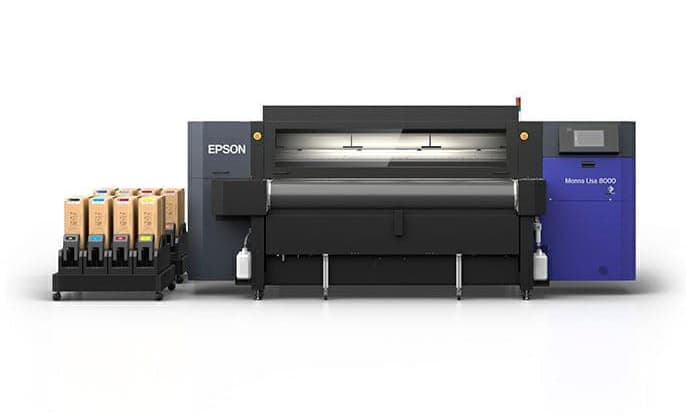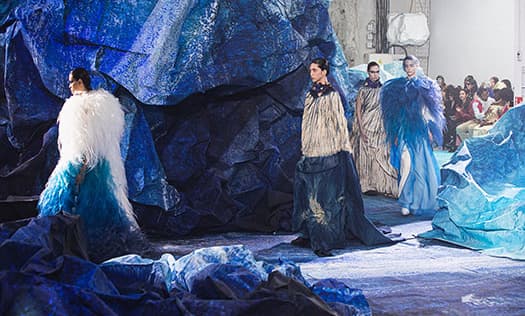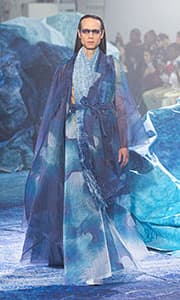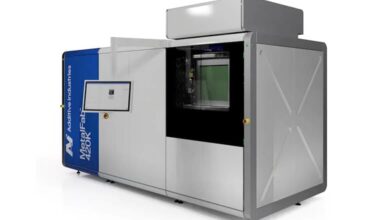Epson’s Inkjet Technology Goes Fashionista

Japanese multinational Epson provided production support to Tokyo-born couturier Yuima Nakazato for his 12th couture collection “BLUE” presented at the 2022 Haute Couture Week in Paris on 7 July, 2022. For almost the entire month of June, Epson’s inkjet technology was used to create clothing and backdrop for the event.

Nakazato’s fashion house is driven by a vision of creating a better future through garments. Surplus dead stock fabrics, which would eventually be discarded, were selected for the dynamic designs, exploring how changing perspectives could enable the creation of value from something previously deemed worthless.
Nakazato drew dozens of pen-and-paper sketches this season to help visualize the abstract images in his mind. Endorsing the fashion house’s vision, Epson used its digital textile printing technology to reproduce these delicate handwritten sketches onto the fabric without losing their unique impact. Unlike conventional textile printing which requires huge quantities of water, digital textile printing uses much less water, resulting in high creative expressiveness with a minimal environmental impact.

Epson reproduced Nakazato’s designs on a sheer silk organdy fabric using a high-performance Monna Lisa digital direct-to-fabric textile printer at its Fujimi plant’s Textile Solution Center (TSC Asia). As printing plates are not required in digital textile printing and since the used pigment ink requires fewer steps than a dye ink printing process, Nakazato was able to work on his designs until shortly before the show.

Besides the fashion collection, Epson also assisted in the stage design by producing digitally printed paper sculptures which were important elements that helped create the ideal background for the blue-themed collection. The entire stage was enveloped by Nakazato’s hand-painted images of Earth which was printed over an enlarged surface of 832 sq m of print paper using an SC-P20050 inkjet printer at Epson’s LFP Solution Center at its Hirooka office in Shiojiri. Epson’s Dry Fiber Technology was also used to process waste paper for making armatures that were put up in the staging area for creating three-dimensional objets d’art.





